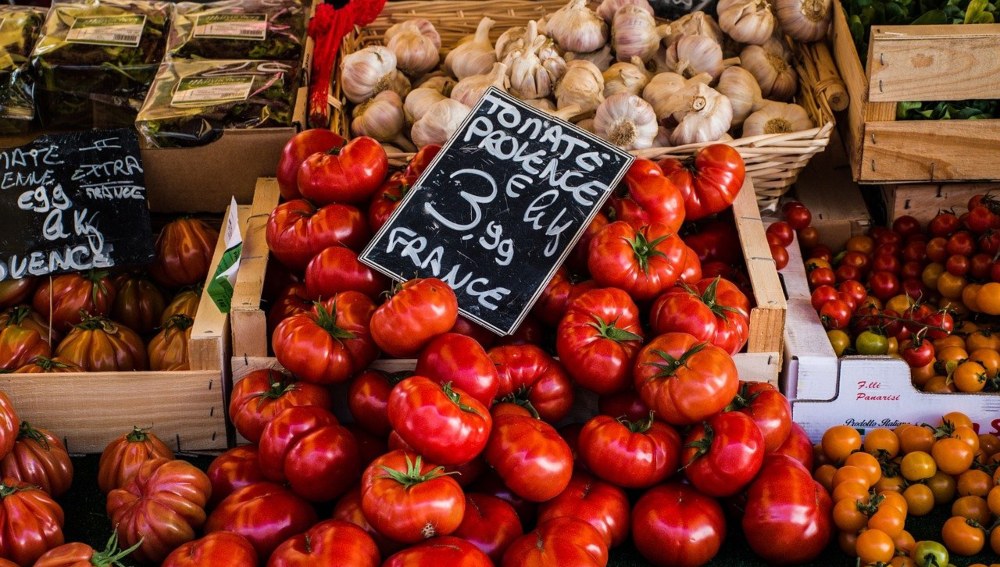

Sometimes it’s the thinnest of membranes that separate us from each other. This came to mind when I was contemplating our dramatic change of shopping habits over the last four years.
For most of my life, I have shopped for food in supermarkets and for clothing in department stores. This is, indeed the predominant behavior pattern in most of North America. We are thoroughly used to purchasing things for our daily use in packaged quantities, whether it’s carrots in a shallow tub wrapped in clear plastic or a shirt folded, pinned, and tucked neatly into a plastic sleeve. Indeed, I did not think anything about this until I stopped doing it.
We used to buy water in plastic bottles, along with juice, milk, and other drinkables. But we realized we could buy these things differently. We now fill reusable glass bottles with water every week and buy all our fruit and vegetables from vendors who sell it without packaging. These are not weekend farmers markets, but shops or trucks where the produce is simply displayed in crates, baskets, or bins. As the customer, you announce what you want and a staff person picks out the items as you observe.
Similarly, we now buy our clothing largely from truck vendors that line the regular street markets in our village and other neighboring villages. The sweaters, shirts and pants are hung off of overhead hooks suspended from the projecting truck canopy, or laid out on tables. If you point to an item of interest, the vendor lays it out and sometimes puts out two or three similar items for us to compare. We are invited to buy it, take it home, try it on and if its not satisfactory to bring it back next time. We have done just that several times. Last weekend a merchant did not have pants in my size and preferred color. This weekend, as we approached his truck, he proudly held up the pants he brought for me.
A lifetime of purchasing good in the U.S. taught us that opening a touching items for sale meant you were committed to buying them. Initially it made us nervous when vendors would lay open an item; we feared they expected us to purchase it. So we were tentative. Now we just dive right in see how the product feels in our hands.
But here is the real beauty of it all. In each and every one of these exchanges, we have a conversation with another human being. Sometimes it’s short, sometimes it’s long. It might be with the vendor or another customer. Or with a friend or neighbor who also happens to be in the same place. And while walking to or through the market, we run into people we know and have a chat. Sometimes strangers approach us to wish us a good day. Even with masks worn during the pandemic, the eye contact is precious.
While all of these little interactions take place in the public realm they can be personal in nature. Some people stop my wife and ask her about her herbal remedies for aches and pains, describing them in detail. Usually there is an inquiry about a family member not present. Often, I have been asked how I am recovering from an illness or surgery, when that is the case. These repeated and renewed connections cement the relationships we have with other people in our village and the region. It’s a constant reminder that we are part of a community.
Some of these patterns have evolved into rituals. In several towns, we always go to one particular coffee bar. Not just because we enjoy their brand but because we know the proprietors. They now know our preferences and move to meet them as soon as we walk in the door. Several street market merchants now bring items they know we will like in order to inspect them. Sometimes we make the purchase, sometimes not. But we always express appreciation for the thoughtfulness. Its one of many tiny social compacts that have accumulated over time.
The absence of packaging involves a more tactile experience. We can see the merchandise. If it is food, we cannot touch it but we can examine it up close, as the displays are often close to eye level. With some items the merchant will hand us samples; that almost always clinches the sale. With clothing, the merchants will point out the fabric tag and, more often than not, offer a discount, if we are regular customers.
We often remark on the “entertainment value” of buying fruit and vegetables. When the trucks arrive, people gather about and chat, comparing fresh items and animatedly discussing what to buy. We wait our turn while elderly nonnas fill baskets with produce for the family lunch later that day. The vendors crack jokes and play around like kids, joshing with customers, including us. One of them likes to surprise us with new English words he has learned.
There is one additional benefit to this kind of socio-commercial transaction. Everyone involved feels a collective responsibility for the shared public space. If bits of refuse drop, people reach down to pick it up and take it to a waste bin. The merchants sweep the pavement clean when they are done, bringing it back to suiting other uses. And people look after each other, with vigorous people helping the older, less agile. It is, after all, a shared public living room, with everyone acting as both hosts and guests.
I had never made such as visceral a connection between packaging and social life. And how the absence of packaging sharpens the senses while engaging the soul.
Discover more from Post Alley
Subscribe to get the latest posts sent to your email.

Then there is the rest of us…….on line at Amazon.